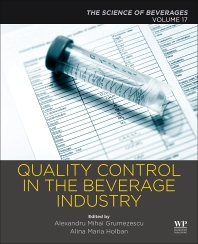Similar to the drops, twists and turns of popular amusement park rides, product fads can leave beverage-makers gasping for breath — and redirecting budgets. Take for example, pomegranate, formerly the most super of the superfruits, which has plausibly suffered the most due to consumers’ frequently fickle preferences.
According to this year’s annual New Product Development survey (page 56), pomegranate will continue its fall from prevalence. In 2008 and 2009, survey respondents identified pomegranate as the No. 1 most-used flavor in beverage releases. But pomegranate’s decline was swift as the superfruit ranked 10th on the list of most-used flavors in 2010. Last year, pomegranate placed 18th as a most-used flavor and it’s 15th on the list of most anticipated top-selling flavors in 2012, according to Beverage Industry survey results.
The decline of some superfruits also was noted in this month’s juice and juice drinks article on page 12. Sarah Theodore, global drinks analyst at Mintel Food & Drink, highlighted the decline of pomegranate and other superfruits, which she partially attributed to their higher costs. However, Theodore also noted that the drop-off in superfruit sales could be attributed to the fact that superfruit fans might be more inclined to try the newest variety rather than sticking with the less trendy stand-bys.
So is it safe to presume that consumers are dedicating their dollars to guava, yuzu and coffee fruit? It might not be; in the last two years, New Product Development survey respondents forecasted a return to more traditional flavors, such as vanilla, chocolate and strawberry. Consumers’ preference for familiar flavors continued with predictions for this year’s best-selling flavors to include the Neapolitan varieties as well as orange and mango. In contrast to pomegranate, mango, which ranked second as a most-used flavor in 2008, has enjoyed several years of sustained popularity as consumers have embraced the flavor as a new American staple.
In addition, this year’s survey shows an upcoming peak in new product development. Unlike the last couple of years, 59 percent of survey-takers reported that they expect to have an increased research and development (R&D) budget in 2012. An additional 52 percent of respondents expect their R&D budgets to remain the same as in 2011, according to Beverage Industry’s New Product Development survey.
The next year will tell if within that optimistic outlook are some of the trends mentioned in this issue, such as juice drinks featuring aloe vera, hard cider and products with ingredients stored in the cap for freshness and interactivity. Or perhaps exotic flavors such as anise, bitter orange peel, fennel and tamarind, which 2012 New Product Development survey respondents identified as possible trends, might become the flavors that create lines as long as the most popular theme park rides this year.


